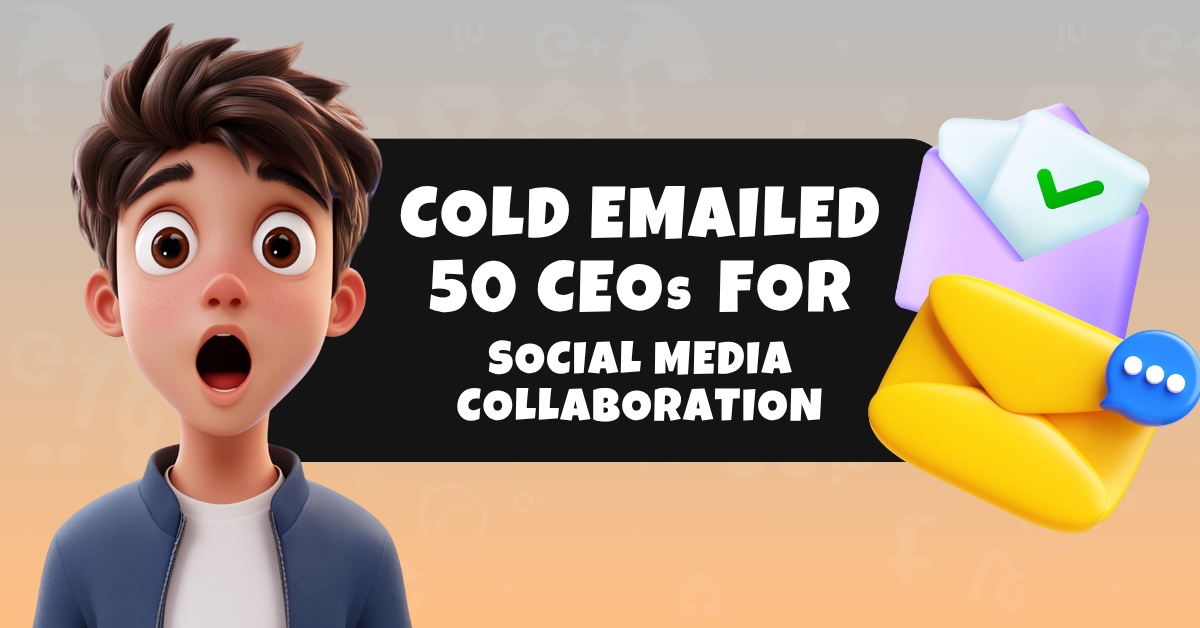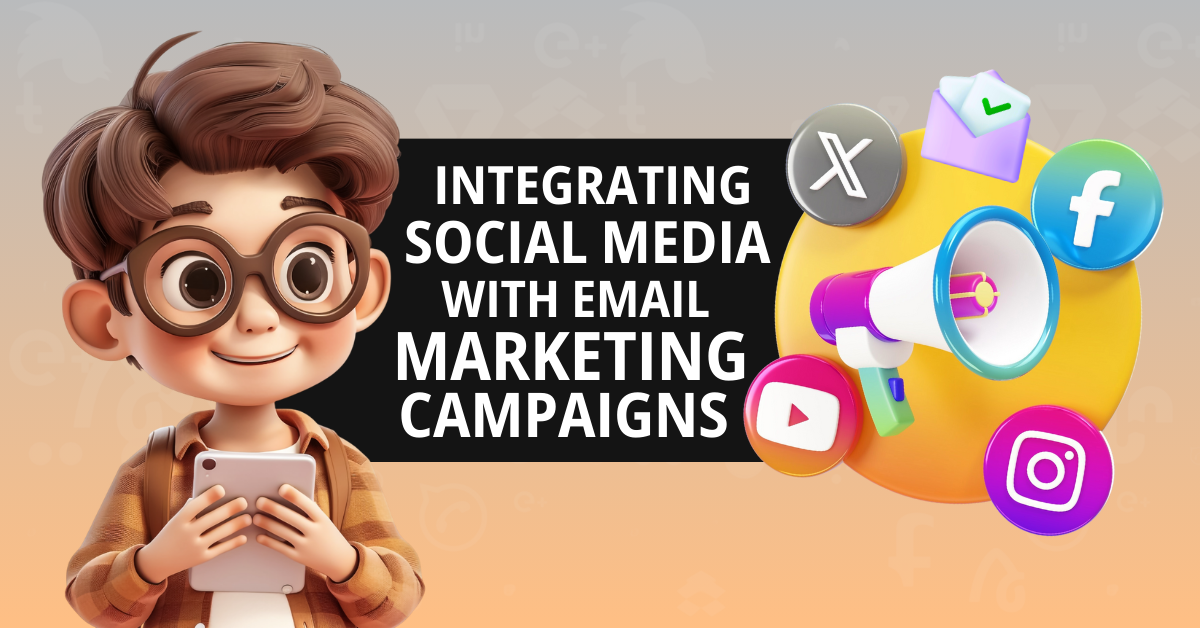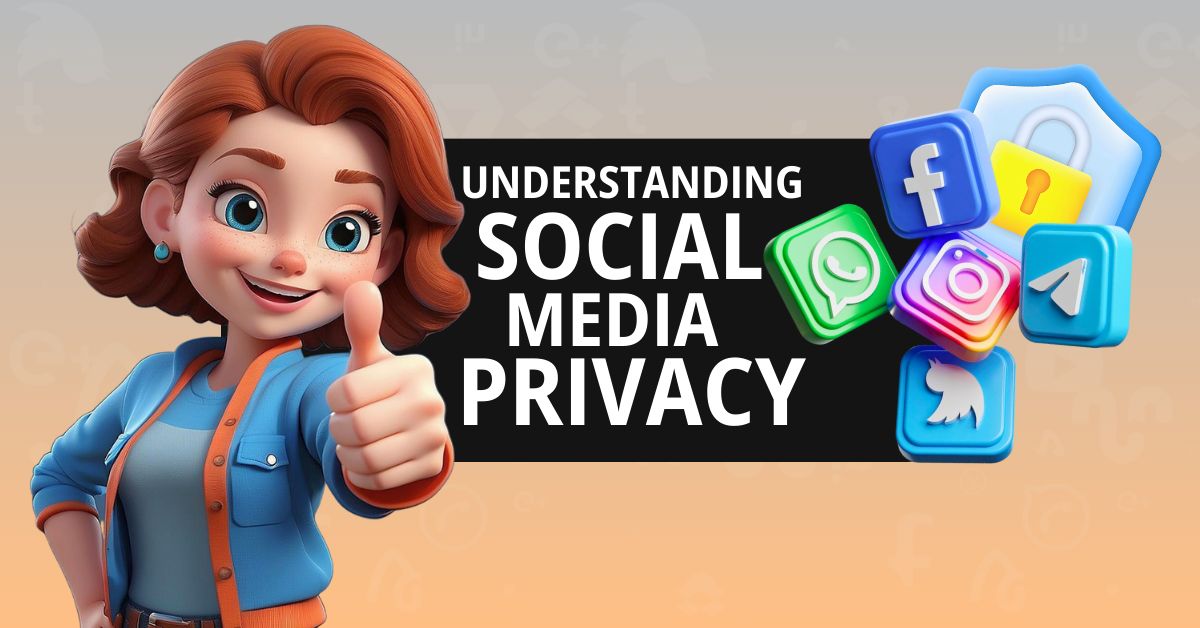It started with a dare.
A colleague said, “You won’t get a single reply if you cold message CEOs about social media partnerships.”
Challenge accepted.
I picked 50 CEOs from startups and mid-sized tech companies. Some I admired. Some I wanted to partner with for social visibility. Some I thought might become clients for our social media growth services.
I didn’t have a big audience. I wasn’t famous. I just had a clear value prop for social engagement, a spreadsheet, and a Gmail account.
Here’s what happened—and what I learned about cold social outreach, content-based messaging, and digital visibility.
The Setup: Choosing the Right People for Social Media Collaboration
I knew success hinged on the list.
So, I spent time handpicking the right CEOs. I wasn’t looking for random executives. I wanted:
- Founders who were active on LinkedIn or Twitter
- Leaders who recently raised funding or launched a digital campaign
- Companies with a growing social presence or marketing org
I used LinkedIn, Crunchbase, and company blogs. Then I manually verified emails, looked at recent posts, and engagement patterns.
Yes, it took time. But that effort paid off later—especially for social traction.
My Cold Social Messaging Framework
Before writing a single email or DM, I made one rule: every message must feel like it was crafted for one person, not mass-blasted.
To make it social-first:
- I referenced specific posts or campaigns from their LinkedIn or Twitter
- I offered a clearly framed benefit tied to brand engagement or content growth
- I asked a light-touch question (no calendar link dumps)
Here’s one that worked:
Subject: Quick idea to boost [Company Name]’s LinkedIn engagement
Hey Jamie, loved the product update thread last week—especially the async onboarding demo. I run a micro-content studio that helps early-stage SaaS teams repurpose posts into carousel assets and video clips.
Want a preview deck?
Simple. Personalized. Optimized for visibility.
What Happened When I Sent 50 Socially-Tuned Cold Emails
Out of 50:
- 21 were opened
- 12 replied
- 7 turned into async conversations
- 2 became social media content clients
- 1 referred us to a partner CMO
- 1 invited us to co-create a branded LinkedIn series
Even better? A few said my outreach stood out because it didn’t sound like a sales email—it sounded like a media partner.
What Drove Engagement in My Cold Social Pitches
These are the three tactics I’d absolutely repeat in future outreach:
1. Use LinkedIn context as the hook
Mention specific posts, likes, or campaigns. Show you did the scroll.
Examples:
- “Saw you posted about async sales—loved that idea.”
- “Noticed the product video hit 20k views—well done.”
- “Congrats on the Series A—I imagine social content scale is a priority.”
2. Offer media value, not just services
- Instead of saying “we do X,” I pitched assets: “Want a sample carousel?” or “Want a 30-second short-form edit of your founder video?”
3. End with a low-friction CTA
No hard asks. Just:
- “Want me to send a 1-pager?”
- “Should I send an example of how we turned a post into 3M views?”
Mistakes I Made in Social Outreach (and Fixed)
1. Too Generic Messaging
Early on, I said: “We help startups improve visibility and efficiency.” That failed.
Better: “We help your team turn founder tweets into automated LinkedIn content workflows.”
2. Over-explaining or over-designing the pitch
Long blocks = drop-off. I stripped it down to 3 sentences max.
3. Weak, non-social subject lines
Bad: “Quick question”
Good:
- “Saw your new video post—quick idea”
- “Your launch tweet got 2K likes—here’s a way to build on it”
- “Content boost idea for [company name]”
Tools I Used to Make Social Cold Outreach Work
- Google Sheets – CRM lite for contact + reply tracking
- Gmail + Reply.io – sequencing and reply tracking
- LinkedIn (native) – profile research, comment engagement
- Findy / Hunter – email verification
- Clay – profile enrichment and social intent signals
- Figma – quick mocks of branded social templates
Want a quick Clay review? It’s flexible, fast, and lets you build smart workflows. Definitely saved me hours once I figured it out.
But the tool didn’t do the writing. The message did.
My Social Follow-Up Style: Add Value or Don’t Follow Up
Half my replies came after a follow-up, but not because I nudged.
I added something new:
- “Noticed you just published that hiring post—we’ve helped others turn those into applicant-driven reels.”
- “Just saw your founder Q&A video—want a free edit into a short?”
- “Closing the loop on my last note—still happy to share a few formats we used with [peer startup].”
The pattern: show up in their feed, then offer value in the inbox.
What I’d Change to Improve Cold Social Pitches Further
- Add a visual (like a carousel preview or social content teardown)
- Comment/like posts before sending cold email
- Tailor subject lines to their latest social activity, not just funding/news
- Use Loom to show a before-after example in 30 seconds
- Reference relevant hashtags, influencers, or campaign style in their niche
Also, I’d dig deeper into tools that combine outreach and enrichment. I spent time reading Zoominfo pricing and feature breakdowns—it helped me understand what’s worth paying for as I scale this out.
But in the beginning? You don’t need a massive stack. You just need a good message.
Closing Thoughts: Cold Outreach for Social Isn’t Dead. It’s Just Undernourished.
What I learned?
When done right, cold messaging for social media collaboration doesn’t feel cold at all.
If your message shows you understand their content, audience, and goals—they’ll respond. Because smart CEOs don’t want more noise. They want more reach, more trust, and better content. If you want to break in: don’t pitch. Partner. Don’t sell. Co-create.
Even one thoughtful social-first message can lead to an ongoing relationship—or a campaign that trends.





